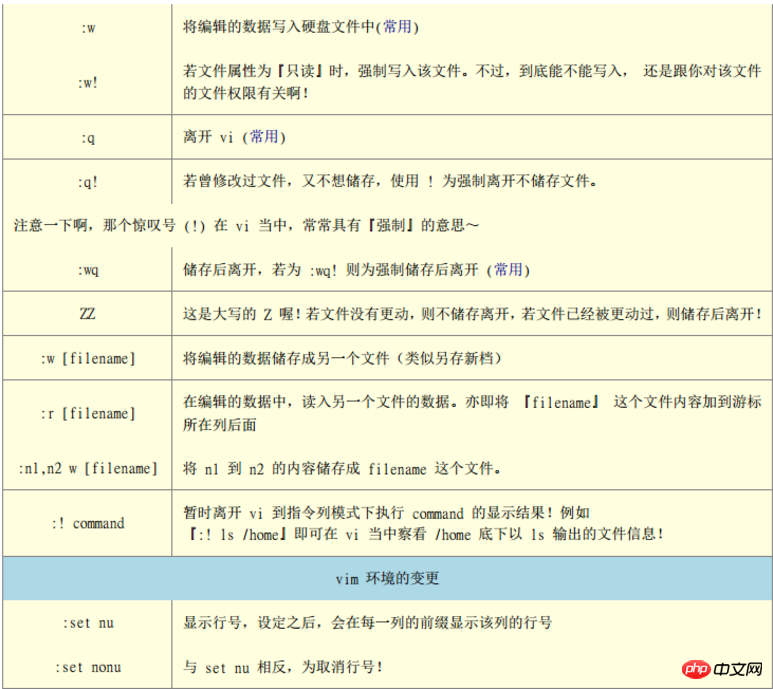Vim is a very commonly used editor on Linux. Many Linux distributions have vi (vim) installed by default. There are many vi (vim) commands, but if used flexibly, the efficiency will be greatly improved. Vi is the abbreviation of "visual interface", and vim is vi IMproved (enhanced version of vi). In general system management and maintenance, vi is enough. If you want to use code highlighting, you can use vim. The following vps detective has compiled a tutorial on how to use vi: it includes a basic introduction to vi, usage modes, opening, closing and saving files, inserting text or creating new lines, moving the cursor, deleting, restoring characters or lines, searching, etc. This article is more suitable. A tutorial for beginners to learn vi.
Vim has three modes: command mode, edit mode, bottom line command mode
Command mode: vim document enters the general command mode. At this time, the function of editing the document mainly relies on the keyboard The meaning of the command is to perform
Editing mode: i,o,a,r in command mode enter the editing mode. The editing mode is used for general input, except esc
Bottom line command mode: general Mode press: / ? Enter
Commonly used commands in normal mode:
[page Down]: Move the screen down One page
[page Up]: Move up one page on the screen
Number 0: Move to the front character of this line
Symbol$: Move to the end of this line
Letter G at the above characters: Move to the last line of the entire file
nG: Move to n lines of the file
Letter gg: Move to the first line of the file
n : n is a number, the cursor moves down n lines
/word : Find a string named word under the cursor
?word cursor Find a string named word above
x: Delete one character backward
X: Delete one character forward
dd: Delete the character where the cursor is Entire column
ndd: Delete the n columns downward where the cursor is located
The letters yy Copy the row where the cursor is/nyy Copy the next few lines
The letters p, P Paste, p paste down, P paste up
letter u: restore the previous action
crtl+r or repeat the previous action with decimal point
n1,n2s/word1/word2/ g Find the word1 string between lines n1 and n2 and replace it with word2
1,$s/word1/word2/g Find the word1 string between the first line and the last line and replace it with word2
1,$s/word1/word2/gc Find the word1 string between the first line and the last line and replace it with word2, and confirm each time
Common commands to enter edit mode:

##Common commands in command mode:

##Other commands:
Change file encoding : iconv -f Original encoding -t New encoding filename [-o newfile]
Code inverse selection: crtl + v
Multi-window editing: Bottom line command mode input: SP file name, no Entering the file name means opening this file, crtl + w + up/crtl + w + down to switch windows
The above is the detailed content of Detailed explanation of examples of Vim document editor in Linux. For more information, please follow other related articles on the PHP Chinese website!








